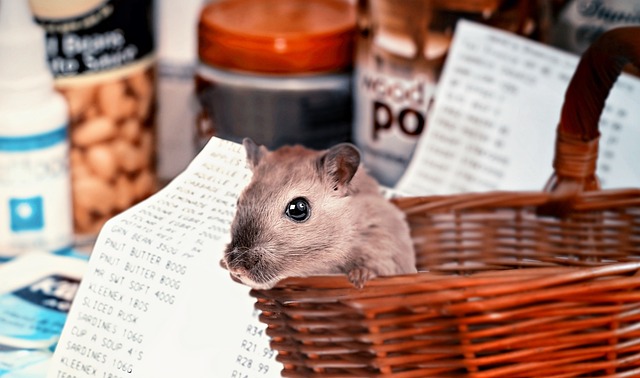Hamsters are popular pets, and many owners want to make sure their furry friends are comfortable and safe in their environment. One question that often arises is whether LED lights are bad for hamsters.
LED lights are popular for lighting homes and other spaces due to their energy efficiency and long lifespan. However, there are concerns about the effects of LED lights on hamsters and other small animals.
While there is no definitive answer to whether LED lights are bad for hamsters, some studies suggest that prolonged exposure to LED lights can negatively affect their health. This is because LED lights emit blue light, which can disrupt the circadian rhythm of hamsters and other animals.
This can lead to sleep disturbances and other health problems. Additionally, LED lights can produce heat, which can be uncomfortable for hamsters and other small animals.
Are LED Lights Bad for Hamsters?
The Effects of LED Lights on Hamsters’ Sleep Patterns
LED lights have been known to affect the sleep patterns of hamsters. This is because these lights emit blue light, which can suppress melatonin production, a hormone that regulates sleep. In addition, hamsters are nocturnal animals, which means they are active at night and sleep during the day.
Exposure to LED lights at night can disrupt their natural sleep cycle, leading to sleep deprivation and other health problems.
The Impact of LED Lights on Hamsters’ Behavior
LED lights can also have an impact on hamsters’ behavior. Studies have shown that exposure to blue light can cause anxiety and stress in these animals. This can lead to various behavioral problems, including aggression, hyperactivity, and depression. Hamsters may also become less active and less interested in their surroundings when exposed to LED lights for prolonged periods.
The Potential Health Risks of LED Lights on Hamsters
In addition to affecting sleep and behavior, LED lights may pose potential health risks to hamsters. This is because these lights emit high levels of blue light, damaging the retina and leading to vision problems.
This is particularly concerning for hamsters, who rely heavily on their vision to navigate their environment. Prolonged exposure to LED lights may also weaken the immune system and increase the risk of infections and other health problems.
Overall, it is essential to minimize the exposure of hamsters to LED lights, especially at night. This can be achieved by using red or yellow lights instead, which have been shown to have less impact on sleep and behavior. In addition, providing hamsters with a dark and quiet environment is essential to promote healthy sleep and reduce stress.
How to protect your hamster from LED lights
Using red lights instead of white lights
Hamsters are nocturnal animals, which means they are active at night and sleep during the day. As a result, they are sensitive to light, exceptionally bright white light, which can disrupt their sleep cycle and cause stress.
One way to protect your hamster from LED lights is to use red instead of white lights. Red lights have a longer wavelength and are less likely to disturb your hamster’s sleep. In addition, you can purchase red light bulbs or covers for your existing light fixtures.
Keeping the light dim and indirect
Another way to protect your hamster from LED lights is to keep the light dim and indirect. Bright lights can cause your hamster to become disoriented, stressed, and even blind.
You can use lampshades, diffusers, or curtains to soften the light and create a more natural environment for your hamster. You can also place your hamster’s cage in a room with less light or cover the cage with a blanket during the day.
Limiting the amount of time your hamster is exposed to LED lights
Finally, you can protect your hamster from LED lights by limiting the time it is exposed to them. This means turning off or dimming the lights in your hamster’s cage during the day and only using red lights at night.
You can also provide your hamster with a hiding place or a nest box where they can retreat when they feel stressed or overwhelmed.
In conclusion, LED lights can harm hamsters if they are exposed to them for too long or if the light is too bright. By using red lights, keeping the light dim and indirect, and limiting your hamster’s exposure to LED lights, you can create a safe and comfortable environment for your furry friend.
How do hamsters see?
Hamsters have relatively poor eyesight compared to humans. They are nearsighted and have a limited ability to distinguish colors. However, their eyes are susceptible to movement, making them excellent at detecting predators and prey.
The eyes of a hamster are located on the sides of its head, giving them a wide field of vision. They can see almost 360 degrees around them, but their depth perception is not very good. This means they may have difficulty judging distances and bump into objects in their environment.
Hamsters also have a unique adaptation called “dichromatic vision.” This means they can only see shades of blue and green, not red. This is because they lack the red-sensitive cones in their eyes that humans and many other animals have.
In addition to their visual abilities, hamsters also have an excellent sense of smell and hearing, which they use to navigate their environment and communicate with each other.
While hamsters may not have the best eyesight, they have other senses that help them thrive in their natural habitat.




